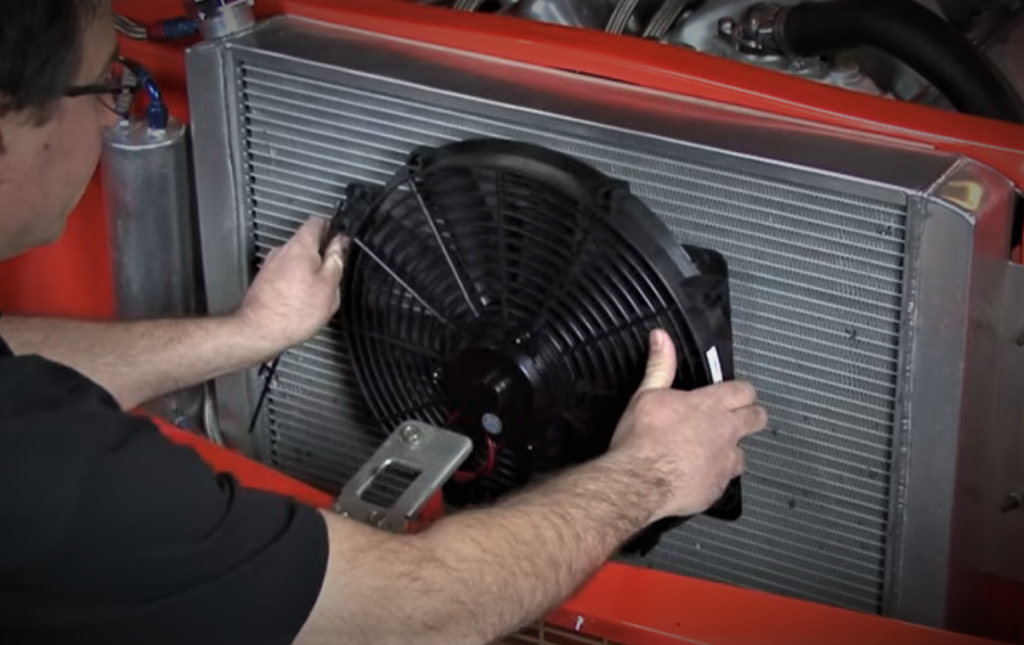Many older vehicles use a belt-driven mechanical fan that pulls air through the radiator to lower the temperature of the engine coolant. While that system often works pretty well, a lot of folks may occasionally encounter a driving environment where the mechanical fan can’t keep-up with the cooling demands of the engine, and it begins to overheat.
That’s especially true in low-speed or idle situations where the mechanical fan isn’t spinning very fast and you don’t have the added benefit of airflow from a moving vehicle.
…But if you’ve ever nervously watched your temp gauge steadily rise as you meander down a parade route in your classic car, you probably already know all this.

The good news is, in a lot of scenarios, adding a secondary electric fan can be an easy solution. And the fine folks at Flex-A-Lite will explain how to do it.
Placed in front of the radiator and configured to run in reverse, a supplemental “pusher” fan can move a consistent amount of air through your radiator regardless of your vehicle or mechanical fan’s speed. Better still, the supplemental fan can be wired to run on a thermostat or manually switched on so it’s ready whenever you need it.
Give this video from Flex-A-Lite a watch and you’ll get some good auxiliary pusher fan installation tips—and you might finally be able to cure your low-speed overheating issue without seriously modifying your cooling system too!

I am installing a rebuilt Ford FE390 in a 30 ft school bus/rv conversion. I am using an electric water pump. Can I run an electric-only fan on a thermostat?
Absolutely, running an electric fan (or fans) with a electronically controlled thermostat is quite common on older vehicles nowadays. Click here to see all the fan switch options at Summit Racing and you’ll find plenty of choices. Many of them are adjustable too, which means you control the temperature threshold you want and, depending on the kit you choose, installation can simply mean plumbing a sensor into a fitting or hose, or pushing a thin probe into the fins of the radiator itself. Electrically speaking, depending on the fan’s current draw, you’ll probably want to connect it via a relay (operated by the thermostat) with fan power coming straight from the battery.
Make sense? You can always reach out to the Summit Racing tech department . They’ve walked plenty of people through electric fan installation jobs, and can offer some tips, advice, and product recommendations too. Good luck!